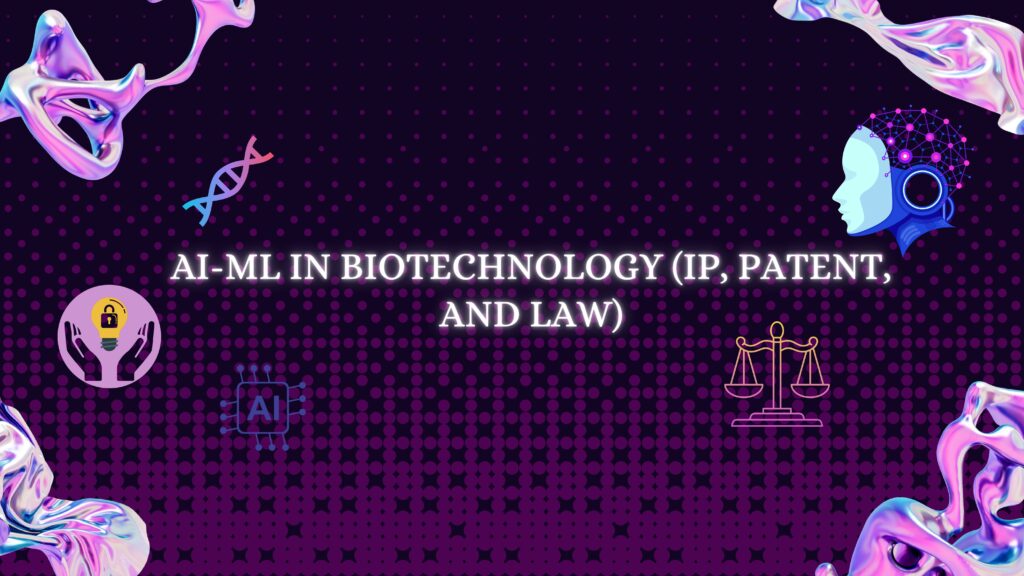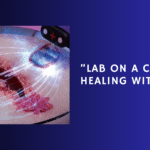Due to rapid technological advancement, the legal frameworks are also changing, supporting AI-generated inventions and their uses in biotechnology. The AI-generated innovations are largely covered by existing intellectual property (IP) regulations, such as those about patents, copyrights, and trademarks. However, it is also important to note that these laws should be flexible to effectively handle the particular difficulties of ownership of such innovations. The ownership rights of intellectual property become increasingly relevant as AI and machine learning advance in the field of biotechnology.
Patent Law Framework
Patent law under the Patent Act of 1970 serves as the main legal foundation for safeguarding AI-generated biotechnology inventions. Globally, the Patent regimes acknowledge inventors as “natural persons,” which creates uncertainty over the ownership of inventions produced by artificial intelligence. Patents can give the inventor exclusive rights for a certain period (20 years under the act), which encourages innovation. However, it can be difficult to distinguish between “ownership” and “inventorship,” especially when innovations are independently developed by algorithms without direct human participation.
Patents must meet three essential requirements, such as novelty, non-obviousness, and utility, which may be challenging for AI-generated inventions to accomplish, especially if human input is low. As a result, legal changes to make it clearer how AI-generated ideas fit into established patent regimes are still being discussed.
Copyright Law Considerations
Another important factor to take into account for AI-generated inventions is copyright legislation under the Copyright Act of 1957, especially when it comes to creative outputs like AI-generated writing and art. The current copyright systems provide difficulties for works generated autonomously by AI because they frequently require human authorship for protection. It is being assessed if and how AI-generated works can be recognized under frameworks such as the Berne Convention and other countries’ laws.
The dynamic character of artificial intelligence creativity necessitates reevaluating the notions of originality and authorship in copyright law since conventional interpretations might not account for non-human producers. Research is ongoing to shed light on possible legislative changes that might be required to efficiently organize copyright safeguards in the context of artificial intelligence (AI)-generated content.
Trade Secrets and Confidentiality
To protect exclusive algorithms and artificial intelligence procedures, biotechnology companies may choose to use trade secret protection rather than patents. As long as businesses take appropriate precautions to safeguard sensitive information, trade secret rules let them keep control over novel procedures without making them publicly known. Trade secrets, on the other hand, do not grant exclusive rights like patents do and therefore must always be protected with an NDA before any disclosure.
Regulation and Policy Reforms
The swift progression of artificial intelligence technologies demands the implementation of flexible legal structures that can adapt to the distinct features of innovations produced by AI. It is the responsibility of policymakers to develop comprehensive guidelines that strike a balance between innovation and moral and legal standards. They should take into account issues like culpability, accountability, and openness about AI’s participation in the creative process. The importance of international cooperation and developing standards that may successfully address the implications of AI on current intellectual property systems is highlighted by discussions surrounding possible revisions. This involves preserving the fine line that separates safeguarding public interests from encouraging innovation.
Future Directions in Legal Frameworks
In order to guarantee uniformity and coherence in the application of IP laws to AI technologies across various jurisdictions, jurisdictional issues must be resolved, the legal environment in regards to biotechnology inventions needs to be continuously reviewed and may need major changes to build a regulatory environment that fosters innovation while granting IP rights.
The interaction of AI, ML, and biotechnology requires careful consideration of intellectual property rights in order to stimulate innovation and protect proprietary inventions. Law firms need to play an important role in assisting parties in negotiating the complexity of intellectual property rights in the setting of revolutionary technology. Recent legal decisions and ongoing arguments around AI-generated biotechnology inventions play an important role in developing an intellectual property rights framework. They emphasize the importance of creating legal frameworks for navigating the challenges of AI innovation in this quickly changing industry.



